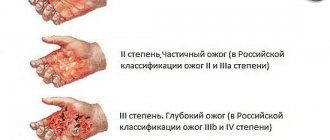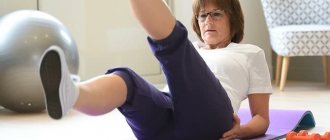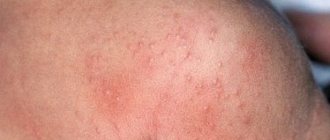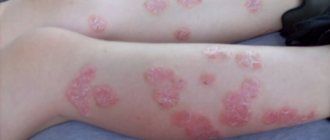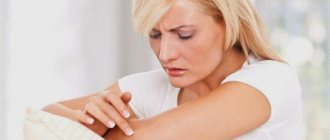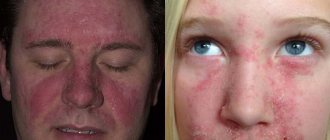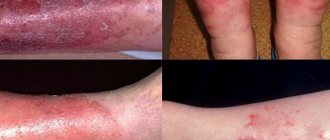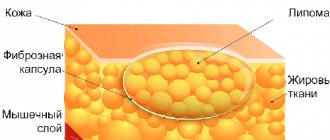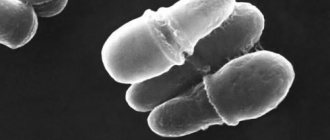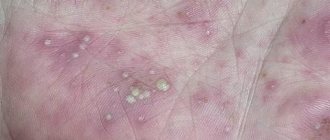The article discusses ointments for the treatment of allergic dermatitis.
This is a skin inflammation - that is, an inflammation of the human body system, which is located on the surface and is fed by an extensive vascular network. When there are no violations of the integrity of the skin and it has an acidic pH, the barrier function is performed well; substances that reach the surface are not allowed to be absorbed. As soon as allergic or microbial inflammation develops, or inflammation resulting from a burn, the epidermis becomes permeable to many substances. This property is used by dermatologists when selecting ointments for allergic dermatitis.
Types and classification
To get rid of pathology, the following types of ointments are used, which are classified depending on the characteristics of the action:
- Anti-inflammatory - they contain corticosteroids that direct their action to eliminate inflammatory processes and itching. However, it must be said that there is an opinion that such drugs can negatively affect the activity of the adrenal glands.
- Non-steroidal anti-inflammatory drugs. It is advisable to use them only in the initial stages of the disease, since they have a lower therapeutic effect compared to hormonal ointments.
- Antihistamines – help eliminate itching.
- Moisturizing - since the main symptom of allergic dermatitis is drying of the skin, the use of fatty creams will be highly effective.
- Preparations with a drying effect. If the pathology is at the soaking stage, then it is best to choose products from this particular group, since they help eliminate inflammatory manifestations and dry out the epidermis.
Let’s study the reasons for a specialist’s choice of one or another ointment for allergic dermatitis.
Hormonal ointments
The disease can be eliminated using alternative methods, but at an early stage of the pathological process. Treatment of dermatitis is successful if the foci of pathology are regularly treated with decoctions of chamomile, stinging nettle, and string. The composition is prepared using the classic method - 1 tbsp. l. raw materials per glass of water, but the amount of the finished medicine depends on the abundance of foci of pathology. An adult should perform home procedures daily, supplementing them with official methods.
Treatment with hormonal ointments is prescribed only in extreme cases.
These include:
- Damage to a large area of skin by allergic dermatitis or lack of results after a course of taking non-hormonal medications.
- Infection in the area of the disease. If pus begins to form at the site of skin lesions with dermatitis, or white blisters appear, the dermatologist prescribes a hormonal cream with an antibiotic, or in combination with an antibiotic and an antifungal component.
- Atopic dermatitis. As a rule, it is treated exclusively with hormonal ointments, since it occurs in a severe form.
The only thing that can upset you when using a non-hormonal ointment is personal intolerance to one of the components.
Non-hormonal ointments contain a large number of herbal extracts. Based on this, when choosing a treatment, it is better to consult a doctor. The reason for this is the fact that plant extracts for various forms of dermatitis can be even greater irritants.
Inexpensive, but effective ointments for dermatitis on the skin include:
- Eplan;
- Bepanten and Panthenol;
- Gistan;
- We see;
- Solcoseryl.
These ointments are called hormonal because they contain hormones. Different ointments have different amounts.
To make it easier to understand how effective and fast the treatment will be, the percentage of the active substance is indicated on the package. As a rule, ointments begin to have an active effect on the rash within 1-3 days, depending on the degree of damage.
But if the external symptoms have passed, then this does not mean that the disease has receded. It often happens that after the pathology has subsided, the disease returns again in a more aggressive form.
If we talk about non-hormonal ointments, their difference from hormonal drugs is that they act more slowly on skin dermatitis. But at the same time, such drugs do not entail various side effects, and the results of therapy are high.
There is only one unpredictable moment that non-hormonal ointments can cause - these are the consequences of individual intolerance to the components.
Many drugs that do not contain hormonal substances are made based on herbs.
But only a doctor should prescribe this or that remedy, after it becomes clear to him what kind of allergy the patient suffers from. If a person suffers from pollen flying in the air, then herbal medicines can make the situation worse.
But at the same time, such ointments are the only safe solution for small children and pregnant women.
Ointments alleviate the course of the disease externally, thereby eliminating a number of causes of dermatosis.
The following will describe the best non-hormonal ointments for psoriasis and atopic dermatitis, prescribed by dermatologists:
- Bepanten. Helps moisturize the skin, protecting against weather irritants, and promotes rapid regeneration of the dermal layer. Analogues - Pantoderm and D-Panthenol
- Eplan. Effectively copes with psoriasis, heals eczema caused by microbes, clears rashes and ulcers, relieves itching from all lesions. Also helps after insect bites
- Skin Cap. It is considered an ointment with a triple effect: it fights fungi and microbes, relieves inflammation. Prescribed for atopy, neurodermatitis, psoriasis, seborrhea and diaper dermatosis
- Zinocap is a cream with the active substance zinc pyrithione. It is an antibacterial, anti-inflammatory and antimycotic agent. Prescribed for seborrhea, psoriasis, atopy
- Zinc ointment. Reviews say that this ointment is the best remedy that helps relieve itching and inflammation even in infants. Prescribed for atopic dermatitis. The active component is zinc oxide, which fights inflammation and helps heal wounds and cracks.
- Ichthyol ointment with a substance concentration of 20%. Promotes healing of lesions, fights inflammation, itching, peeling
To help a person who has weeping areas on the body, doctors prescribe corticosteroid ointments and creams. Such drugs help well in the acute course of the disease. They have a vasoconstrictor effect.
Corticosteroids are the general collective name for a subclass of steroid hormones produced exclusively by the adrenal cortex, but not by the gonads, and having neither estrogenic (female sex hormones), nor androgenic (male sex hormones), nor gestagenic activity, but having, to one degree or another, either glucocorticoid or mineralocorticoid activity.
That is, these are actually hormonal drugs that do not have any effect on human sexual functions.
Remember that too long-term use of external corticosteroid hormones can cause serious side effects: tachyphylaxis, skin atrophy, stretch marks, the development of fungal and bacterial infections, allergies and glaucoma.
Creams are better suited for areas where a person has high humidity - lips, perineum, folds, armpits. But if the skin is dry, then it is better to use ointments for treatment.
Inflammation in the form of weeping surface and swelling
In this case, local therapy consists of applying compresses with an aqueous solution of boric acid or a weak solution of potassium permanganate. They also use chatterboxes, which are prepared in a pharmacy.
After a chat or compress, anti-dermatitis gels, which are based on antihistamines, are applied to the affected area. These include “Psilobalm” or “Fenistil-gel”. When the inflamed area stops getting so wet, in order to speed up healing, use a dermatitis cream such as D-panthenol (Bepanten). It is absorbed by the skin and transformed into a vitamin, joining the normal metabolism of skin cells and stimulating division. Dexpanthenol preparations can replace ointments for allergic dermatitis such as Solcoseryl or Actovegin. These non-hormonal agents improve the nutrition of skin tissues affected by dermatitis.
Corticosteroids
Corticosteroid ointments against allergic dermatitis are divided into the following types according to the severity of the effect:
Such ointments for allergic dermatitis can only be prescribed to adults by a doctor who will indicate the timing of use of the drug (a strong drug is usually used for no longer than three days, while drugs of “weak” activity are used for up to seven days), and will tell you about gradual withdrawal so as not to cause harm own skin by sudden withdrawal of a corticosteroid.
What other ointment will be effective for allergic dermatitis?
Types of ointments for dermatitis
To relieve symptoms of inflammation, rapid healing of the skin, and alleviate the patient’s condition, doctors prescribe medications for topical use. Ointments for dermatitis in adults differ in their composition and effects. There are two large groups of medications. Non-hormonal drugs:
- have a natural base;
- can be used for a long time;
- used to treat children;
- do not affect hormonal balance;
- With prolonged use, allergic reactions are possible.
Hormonal ointment for skin diseases is prescribed for acute forms of dermatitis and no results from treatment with non-hormonal agents. Features of these drugs:
- according to their effect they are divided into forms from weak to very strong;
- have side effects;
- addictive;
- have a quick effect on damaged skin;
- require gradual withdrawal of ointment use;
- affect the functioning of all organs.
For treatment to be effective, you must adhere to the rules for using ointments for dermatitis. Doctors do not recommend self-medication; they give the following advice:
- The drug is applied in a thin layer to clean, dry skin;
- do not rub the ointment in - you can damage the inflamed areas of the epidermis;
- if there are no results, consult a doctor to change the treatment regimen;
- treatment begins with drugs that have the mildest effect, gradually moving to stronger drugs;
- it is unacceptable to abruptly stop using hormonal ointments;
- the assigned course must be completed.
Non-hormonal ointments for dermatitis
In the manufacture of these drugs, natural ingredients and vitamins are used. Non-hormonal ointments for dermatitis are safe to use. Funds from this group:
- promote rapid skin healing;
- produce an effect at the initial stage of seborrheic, atopic dermatitis;
- are not addictive;
- improve metabolic processes in tissues;
- allow long-term use.
Experts note the disadvantages of using these drugs for skin diseases. When using non-hormonal ointments:
- allergic reactions to the drugs used develop if the patient is prone to allergies;
- there is ineffectiveness of treatment for severe types of inflammatory process;
- recovery time is greatly delayed;
- The allergic, contact form of dermatological diseases cannot be cured.
For inflammatory processes on the skin, doctors prescribe drugs from the group of non-hormonal ointments, which differ in their effects:
- moisturizing – normalize water balance, accelerate recovery – Keratolan, Videstim;
- regenerating – activate healing, restore tissue – Radevit, Panthenol;
- anti-inflammatory – stop irritation, itching, relieve inflammation – Finistil, ichthyol;
- antiseptic - do not allow bacteria to penetrate through the damaged surface of the skin - Levosin, furatsilin ointment.
Eplan
The drug for local use quickly stops the process of suppuration, accelerates tissue regeneration and healing. The ointment has an analgesic and bactericidal effect. Eplan eliminates itching from insect bites, effectively treats eczema, herpes, psoriasis, skin damage - wounds, cuts, abrasions. The drug is distinguished by:
- composition – active ingredient glycolan, auxiliary components – ethylcarbitol, glycerin, triethylene glycol;
- contraindications – individual intolerance to the ingredients of the product;
- price – 180 rub. for 30 grams.
Bepanten
An effective remedy for skin pathologies is recommended for the treatment of pregnant women and children, starting from infancy. The active ingredient in the composition - dexpatenol - relieves inflammation, normalizes metabolism at the cellular level, and promotes rapid healing. Features of the drug Bepanten:
- used to treat the skin of the hands and face, burns, cracks, eliminate rashes, atopic dermatitis in infants;
- used to prevent diaper rash and heat rash in newborns;
- contraindication is sensitivity to the components;
- price – 420 rub. for 30 grams.
Skin Cap
The drug for external use has antifungal, antimicrobial, and anti-inflammatory effects. Skin-cap is prescribed for the treatment of neurodermatitis, seborrhea, eczema, psoriasis, and is used for children from one year of age. The drug is characterized by:
- counteracting the proliferation of pathogenic microorganisms;
- composition – active substance zinc pyrithione;
- contraindications – simultaneous use of glucocorticosteroids, sensitivity to components, skin neoplasms, dermatic lesions of the mouth area;
- price – 850 rub. for 15 grams.
Radevit
The medicine contains vitamins E, A, D, ethyl alcohol, petroleum jelly and glycerin. Radevit is a natural immunomodulator that promotes collagen production. The medicine has an anti-inflammatory, softening effect, improves metabolism in tissues, relieves itching, and heals ulcers. The ointment is distinguished by:
- indications – all types of dermatitis, burns, wounds;
- side effects - increased symptoms - pain, swelling, redness, itching;
- contraindications – excess vitamins E, A, D in the body, hypersensitivity to the composition;
- price – 360 rub. for 35 grams.
Losterine
Articles on the topic
- Ointment for fungus in the groin - a list of medications with descriptions, contraindications and side effects
- Ointment for nail fungus - a list of effective ones with a description of the active substance and reviews
- Ointment for stomatitis - a list of the best medicines with instructions, contraindications and reviews
The product is intended for the treatment of skin diseases accompanied by increased dryness, tightness, and flaking. It contains salicylic acid, naphthalan, urea, almond oil, and herbal extracts. Losterol has anti-inflammatory, bactericidal effects, and pain relief. The drug has:
- indications – contact, atopic skin lesions, psoriasis, neurodermatitis;
- side effects - rarely a slight burning sensation;
- contraindications – sensitivity to components, pathologies of the kidneys, liver;
- price – 580 rub. for 75 grams.
Solcoseryl
The composition of the drug includes extract of the blood of young calves, which gives it unique qualities. Solcoseryl quickly heals ulcers and wounds, activates tissue metabolism, regenerates cells, restores damaged surfaces, and promotes collagen production. According to the instructions, the drug is distinguished by:
- indications – treatment of burns, frostbite, trophic ulcers, abrasions, dermatic diseases;
- side effects - hyperemia, swelling;
- contraindications – pregnancy, children under 18 years of age, lactation;
- price – 300 rub. for 20 grams.
Hormonal drugs
For complicated forms of dermatitis, doctors prescribe ointments containing glucocorticosteroids - analogues of hormones produced by the adrenal glands. The drugs help to quickly cope with inflammatory processes on the skin. Hormonal ointment for dermatitis is prescribed in the following cases:
- relapse of the disease;
- acute form of allergic, contact dermatitis;
- neurodermatitis (chronic inflammation of a neurogenic-allergic type);
- risk of developing eczema;
- erythema (skin hyperemia) caused by allergies;
- lack of results from treatment with non-hormonal agents.
Hormonal ointment for skin diseases has a strong anti-inflammatory, anti-edematous, anti-allergic effect. Preparations containing glucocorticosteroids are divided into the following groups according to their effect:
- weak – Prednisolone, Hydrocortisone;
- medium – Lokoid, Flixotide, Afloderm;
- strong - Celestoderm, Elokom, Flucinar.
Hormone-based ointments for dermatitis on the face, hands and body are addictive, which reduces their effectiveness. The problem is withdrawal syndrome - it is unacceptable to abruptly stop the course of treatment. The development of side effects such as skin atrophy and pigmentation is possible. Corticosteroid ointments for dermatitis have contraindications for use:
- pregnancy;
- helminthiases;
- fungal pathologies;
- venereal diseases;
- lactation;
- tuberculosis;
- chickenpox;
- herpes;
- children under two years of age.
Flucinar
The active substance of the hormonal agent is fluocinolone acetonide, auxiliary components are lanolin, ethylene glycol, citric acid. Flucinar has antiallergic, anti-inflammatory, and antipruritic effects. Features of the drug:
- indications – dermatitis, psoriasis, insect bites, burns;
- side effects - redness, thinning of the epidermis;
- contraindications – fungal, bacterial, viral skin lesions, pregnancy, oncology;
- special conditions – treatment duration is no more than two weeks;
- price – 275 rub. for 15 grams.
Advantan
The external remedy is effective for all types of dermatic skin lesions, eczema, and neurodermatitis. Advantan has a fatty consistency. The composition includes the active substance methylprednisolone aceponate, auxiliary components - beeswax, paraffin. According to the instructions, the ointment distinguishes from dermatitis:
- action – anti-inflammatory, moisturizing, healing, restoring;
- contraindications – tuberculosis, syphilis, viral skin infections;
- side effects – burning, itching (rare);
- special conditions - use for children from four months;
- price – 560 rub. for 15 grams.
Fucicort
The medicine is prescribed for dermatitis of any kind, allergic eczema, which are accompanied by severe itching. Components in the composition: active substances betamethasone, fusidic acid, auxiliary substances: paraffin, sodium dihydrogen phosphate dihydrate, cetostearyl alcohol. Fucicort is characterized by:
- action – antimicrobial, antipruritic, anti-inflammatory;
- contraindications – bacterial, fungal, viral infections, tuberculosis, skin syphilis;
- side effects - urticaria, rash, exacerbation of eczema, burning, itching, dryness of the epidermis;
- price – 470 rub. for 15 grams.
Akriderm
An inexpensive, but very effective drug is an antiseptic, quickly relieves inflammatory processes, manifestations of allergies, and has a keratolytic effect (exfoliates dead cells). Akriderm ointment is used to treat severe forms of dermatitis, eczema, and psoriasis. The drug is distinguished by:
- composition – active substances – salicylic acid, betamethasone dipropionate;
- contraindications – herpes virus, chicken pox, syphilis, tuberculosis, pregnancy, children under two years of age;
- side effects – skin irritation, burning;
- price for 30 grams – 120 rubles.
Coelistoderm
The ointment is effective against allergic dermatitis, contact and seborrheic forms of the disease. The drug demonstrates effectiveness in the treatment of advanced conditions. Celistoderm is characterized by:
- rapid penetration into the deep layers of the skin;
- elimination of allergy symptoms - irritation, itching;
- relieving inflammation;
- calming effect.
Celistoderm in the treatment of dermatitis quickly improves the condition of the skin. According to the instructions for use, the drug has:
- active ingredient betamethasone, auxiliary components – white soft and liquid paraffin;
- indications – treatment of radiation, sunburn, psoriasis, eczema, neurodermatitis;
- side effects - hyperpigmentation;
- contraindications – pregnancy, tendency to allergies, intolerance to components in the composition, lactation period, children under 6 months of age;
- price – 310 rub. for 15 grams.
Infection in the affected area
If pus begins to ooze from the inflamed area, or the contents of the blisters have turned whitish, an ointment for local treatment of allergic dermatitis with a secondary infection attached to it is also prescribed by a dermatologist. In this case, there may be three options:
Ointments and creams for allergic dermatitis can be purchased at any pharmacy.
Therapy for atopic dermatitis
Since this disease causes more concern to young patients, it is necessary to consider which group of ointments against dermatitis is used to treat children.
Treatment of children begins with such local remedies for exacerbation of atopic dermatitis. These same drugs can be used as initial treatment if the pathology is severe.
Upon appointment, the calculation is as follows:
Causes of weeping dermatitis
The inflammatory process caused by weeping dermatitis is caused by many negative factors, often external influences. The most main reason contributing to the development of this type of dermatitis, according to experts, is a disturbance in the functioning of the digestive and gastrointestinal tract (gastrointestinal tract). Besides:
- disruptions in the functioning of the endocrine system, or diseases of an endocrine nature;
- kidney disease;
- helminth damage;
- low level of immunity;
- genetic factor;
- bacterial or fungal infestations;
- stress/psychological illness.
External causes of weeping dermatitis:
- contact with detergents and cosmetics that contain aggressive components; household chemicals;
- allergic reactions to food; medicines; chemical components, etc.;
- allergies to natural components - wool, pollen, plants, etc.;
- unfavorable environmental conditions;
- contact with chemical components due to duty (medicine, cleaning, construction, etc.);
Due to the large list of possible causative agents of weeping dermatitis, subspecies have been identified:
- Professional.
- Fungal.
- Domestic.
In children, weeping dermatitis occurs more often in the presence of other dermatitis, such as diaper dermatitis, as well as against the background of an existing allergy.
Find out more
Application frequency
The frequency of application of the ointment for allergic dermatitis is determined by the doctor. Most often, Advantan can be applied to children from six months of age once a day, Afloderm twice a day, and Lokoid up to three times. "Elocom" can only be used from two years of age, once a day, the course lasts up to a week.
If the rash with atopic dermatitis significantly decreases in severity, rapid cessation of local treatment is undesirable. It is better to switch to a course where the affected areas are lubricated twice a week for 1-2 weeks, on other days nourishing and moisturizing preparations are used.
Medicines “Diflucortolone Valerate”, “Chalciderm”, “Galcinonide”, “Dermovate”, which have a long-lasting powerful effect and maximum penetration into the skin, are ointments used for dermatitis in children over 14 years of age and adults on medical prescription.
Types and forms of dermatitis on the face
Depending on the causes of the disease, its manifestations and its course, there are many forms of dermatitis, the main ones of which will be discussed below. They differ not only in symptoms, but also in treatment methods.
Atopic dermatitis
This form of dermatitis almost always occurs in children in the first years of life and very often the rash appears on the face (you can see manifestations on the cheeks, the forehead, nose, and chin can also be affected). The main cause of atopic dermatitis is sensitization of the body to a specific allergen (increased sensitivity to a particular agent). Most often, the provoking factor for the progression of atopic dermatitis on the face is the introduction of complementary foods. Also, a huge role is played by the environment that surrounds the child, and in particular the quality and composition of diapers, toys, as well as household chemicals that parents use to wash everything.
The danger of this disease is that if measures are not taken to treat the child in time, atopic dermatitis can become the start of the “atopic march.” This concept combines many allergic diseases that a child may encounter in adulthood. The most dangerous of them are atopic rhinitis and bronchial asthma.
Allergic dermatitis
From the name of this pathology, it becomes clear what the cause is and what the mechanism of development of the disease is. In this case, the allergen can enter the bloodstream in one of three ways: through the skin, through the digestive system and through the respiratory system. There are many allergens that can cause manifestations of this disease. Most often they are dust, fluff, pollen, animal hair, food allergens (for example, citrus fruits, chocolate, seafood and much more).
Allergic dermatitis can be easily cured: simply eliminate the body's contact with the allergen. However, this must be done in the early stages, otherwise the disease may become chronic, which is fraught not only with the appearance of scars on the face, but also with disturbances in the general condition: neurotic disorders, headaches, sleep disturbances and appetite problems.
Steroid dermatitis
Steroid (rosacea-like, oral) dermatitis is a disease that occurs as a result of an allergic reaction to decorative and hygienic cosmetics (for example, lipstick, toothpaste, shaving foam). Also, disruption of the gastrointestinal tract, as well as taking hormonal drugs for a long time, can predispose to the occurrence of rosacea-like dermatitis.
This disease is registered in young people under the age of 40. Red or pale pink spots are observed around the mouth, as well as on the cheeks and bridge of the nose. Diagnosis and treatment of oral dermatitis is usually not difficult. But if the provoking factor is not eliminated in time, the skin may peel and crack.
Contact dermatitis
According to the mechanism of development, contact dermatitis is similar to the allergic form of the disease. The only difference is that in this case, the skin that was in direct contact with the substance that caused the allergy becomes inflamed. This can be latex, synthetic fabrics, cosmetics, household chemicals, dyes, alloys used to make jewelry (for example, nickel) and much more.
The difficulty in diagnosing contact dermatitis is that it is not always possible to trace the connection between an allergy and contact with a specific substance - sometimes more than 10 days pass between these two events. If you do not pay attention to the manifestations of this disease for a long time, it can become chronic, complicated by a secondary infection and cause a lot of inconvenience to a person. About the treatment of contact dermatitis.
Seborrheic dermatitis
This disease can appear at any age. Its occurrence is associated with disturbances in the functioning of the immune system, which lead to the proliferation of opportunistic flora, which normally lives on human skin. The increased growth of these bacteria leads to changes in the quantity and quality of the secretion produced by the sebaceous glands.
There are 2 forms of this disease:
- Oily seborrhea. It manifests itself as an oily sheen of the facial skin, clogged pores, and the appearance of comedones and blackheads.
- Dry seborrhea. With this form of the disease, peeling of the skin is observed, which is very difficult to get rid of. The skin will look dry and scaly.
- Seborrheic dermatitis, like all other types of this disease, must be treated under the supervision of a specialist.
special instructions
Hormonal ointments should not be used on the face. In this area, it is advisable to use only calcineurin inhibitors and moisturizers.
If bacterial or fungal flora is suspected of being attached to areas of dermatitis, ointments containing an antifungal component and an antibiotic are prescribed: Pimafukort, Triderm.
People often ask for ointments to treat allergic dermatitis on the hands.
Dermatitis ointment for children
Skin lesions in children occur starting in infancy. Hormonal drugs are dangerous for the child's body. Penetrating into the blood, they eventually cause adrenal insufficiency. When choosing ointments for treating children, preference is given to non-hormonal agents. Pediatricians prescribe:
- Gistan is a herbal preparation used for children over the age of one year;
- Zinc ointment for dermatitis on the arms, legs, face - has a drying, anti-inflammatory, antipruritic effect;
- Bepanten - recommended for use from birth.
Wundehil ointment for treating children has a plant base. The drug for topical use is distinguished by:
- bactericidal, anti-inflammatory, wound healing, analgesic effect;
- Possibility of use from infancy;
- contraindications – sensitivity to components;
- no side effects;
- price – 180 rub. per tube 15 grams.
To treat dermatitis in childhood, drugs are used that alleviate the baby’s condition. Among the popular means:
- Ointment for dermatitis on the skin Radevit. The drug has a moisturizing, softening, antipruritic effect. Contraindications include hypersensitivity to components, hypervitaminosis E, A, D. The price of the ointment is 360 rubles. for 35 grams.
- Sudocrem - used for diaper dermatitis in newborns, has a calming effect, eliminates dryness and allergy symptoms. The drug is contraindicated in case of sensitivity to the components. Price – 300 rub. for 60 grams.
Moisturizers
For children under seven years of age, hormonal cream should not be applied to the inflamed skin itself, but to previously lubricated skin with emollient, that is, a substance that has a sufficient degree of fat content and, when applied, forms a film on the skin. Good emollients are Emolium, Topicrem, Mustela Stelatopia, La Roche-Posay.
"Mustela Stelatopia" is an emulsion cream made from natural substances that spreads easily over children's skin and dries within a few minutes. It can be used not only as a base for a hormonal drug, but also in periods between the use of topical steroids, as well as before going outside, especially during the cold season. The emulsion cream also helps eliminate skin itching characteristic of atopic dermatitis. It can be replaced with Fmisiogel AI, and you can also alternate medications. “Physiogel” also contains membrane-forming lipids, which are identical to those that protect intact skin from external irritants. It eliminates mild symptoms of atopic dermatitis, itching and irritation.
Such emollients are excellent ointments against dermatitis during pregnancy and are an excellent alternative if hormonal drugs are contraindicated.
Emollients must be applied at least three times a day, including after bathing. They need to be changed every three to four weeks to avoid a decrease in the healing effect.
Many people want to find the best ointment for allergic dermatitis.
Methods for treating dermatitis on the legs
Effective treatment is determined by the cause of the symptoms of the disease. When the etiology is precisely established, a clear pattern of action emerges.
The main general directions of treatment of dermatitis without taking into account its specifics:
- elimination of the factor causing damage (removal of the allergen, neutralization of the chemical reagent, elimination of temperature effects);
- following a hypoallergenic, gentle diet;
- antihistamines;
- actions aimed at desensitization, that is, reducing the body’s sensitivity to the pathogen;
- antibacterial therapy if this is an infectious variant or there is a secondary infection;
- anti-inflammatory drugs, including hormonal ones;
- local therapy - the use of antihistamine, antibacterial, anti-inflammatory and healing ointments as necessary, powder or special creams for weeping dermatitis;
- compliance with bed rest or optimal physical activity;
Venous
The main manifestations here will be:
- redness;
- dryness;
- skin thickening;
- the appearance of scales;
- in severe cases of skin ulcers.
The cause is insufficiency of the venous system of the lower extremities. Most often this is due to varicose veins.
Therefore, treatment of venous dermatitis on the legs comes down to treating the underlying venous disease.
Here are the main directions:
- surgical or conservative treatment of varicose veins as prescribed by a doctor;
- reducing the load on the legs - you cannot stand or walk for a long time, wear tight, uncomfortable shoes;
- giving the legs an elevated position during rest to facilitate venous outflow;
- maintain a drinking regime and control the amount of salt in food;
- local use of heparin and anti-inflammatory ointments, including corticosteroids, in areas of varicose veins (they are selected by a doctor);
- moisturize the skin of the feet with creams, use antiallergic ointments to relieve itching;
- follow a hypoallergenic regime so as not to further irritate the skin;
Allergic
Allergic dermatitis is caused by the action of an allergen. The first requirement is to identify this agent using samples and completely eliminate it. Without this, symptomatic treatment will be ineffective.
Symptomatic remedies are as follows:
- taking antiallergic drugs;
- in the acute phase, it is possible to administer steroid hormones strictly under the supervision of a physician;
- carrying out desensitization of the body, that is, reducing sensitivity to allergens (calcium preparations, sodium thiosulfate, ordinary saline solutions);
- the use of antipruritic, anti-inflammatory, hormonal ointments.
Photo: Allergic form
Kholodovoy
Cold dermatitis is caused by a vascular reaction of the skin to low temperatures, spasm of capillaries and impaired blood flow. The second reason is a change in skin proteins and the body’s reaction to them as to a strong allergen.
Treatment methods follow from the causes of the disease.:
- eliminating exposure to cold;
- antihistamines by mouth;
- enriching the body with vitamins A, E, B, PP;
- taking medications that improve the condition of blood vessels and microcirculation;
- applying antiallergic and simply nourishing ointments to damaged skin.
Photo: Atopic form
Infectious
Infectious dermatitis is most often a manifestation of an underlying infectious disease (for example, measles, chickenpox, syphilis), although it can also be an independent nosological entity.
It can be caused by viruses, bacteria, fungi.
Etiological treatment is aimed at combating the primary infection.
To alleviate symptoms, use:
- anti-inflammatory;
- antihistamines;
- antibacterial drugs.
When body temperature rises, anti-inflammatory drugs will ease the general condition.
Treatment can be either local - with ointments, creams, compresses, or general - with tablets, injections.
Zastainogo
The congestive variant is a type of venous. Changes appear in the skin due to disturbances in the outflow of blood and lymph through the vessels.
The skin becomes dense, swollen, very itchy, redness, cracks, and ulcerations appear.
In this condition, the skin does not receive sufficient nutrition and is susceptible to secondary lesions, including allergic and infectious ones.
Treatment involves:
- normalization of blood flow in the veins, treatment of varicose veins, lymph drainage;
- elimination of skin damage, gentle care, elimination of allergens;
- constant softening and moisturizing of the skin;
- use of anti-inflammatory, antihistamine drugs;
- antibacterial treatment of associated infection.
Photo: Chronic form
Other non-hormonal agents
For this disease, children, pregnant women, and adults are prescribed non-hormonal ointments against dermatitis, which can be different:
You should especially carefully select an ointment for allergic dermatitis for children.
